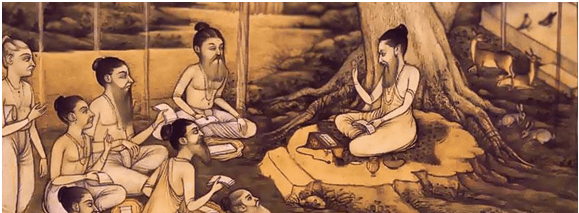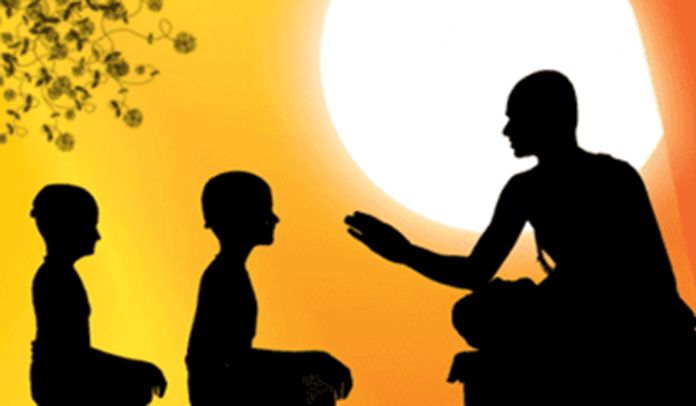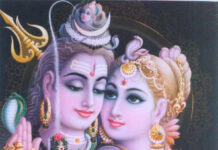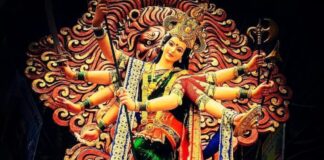Just a thousand years ago, India was dotted with universities across its length and breadth where international students flocked to gain credentials in advanced education. But in the last 200 years, the connection with age-old knowledge streams has been severely disrupted. In the first part of this new series, Sahana Singh will examine the pedagogy of ancient Indian universities, and in subsequent parts will trace their demise.
By Sahana Singh
When Tagore started an open-air school at Shantiniketan in 1901, which later went on to become a famous university, he was one in a long line of educators from India, who believed that holistic learning could only be obtained in the midst of nature under the close supervision of a parent-like guru.
India’s earliest teachers were the gurus, who taught in gurukulams and ashrams located far away from the hustle and bustle of towns in what could be called forest universities. It is no surprise that the Vedas, which are the earliest known oral books containing the thoughts of a highly civilised society is replete with exquisite references to nature and the concept of inter-dependence of living organisms. To these gurus, it was important for humans to realise their humble status in the infinite universe before embarking on the long journey of learning.
Over time, the systems of transmission of learning to newer generations got institutionalised and gave birth to famous universities such as Takshshila, Nalanda and many famous temple universities of which the remains are still found in southern India. A sizeable number of foreign students came to study in India from China, Korea, Japan, Indonesia and West Asia. While the most famous names are Fa-Hien and Xuanzang, who left behind detailed accounts, there are scores of others, who made difficult journeys by foot and onboard the ships just to imbibe knowledge from Indian professors. Many of the foreign students copied texts and commentaries to carry back to their countries. The rush for gaining an education from the Brahmins and Buddhist scholars of India was similar to today’s rush to study in or be certified by American and European universities.
There is a curious hesitation among modern historians to refer to India’s multi-disciplinary centres of traditional learning as universities. This comes from the excessive importance given to the written word, to solid buildings with established pedagogy and rigid systems of certification. Thus, the talented, but bare-chested and dhoti-clad engineers and architects of ancient India, who built incredible irrigation canals, rainwater harvesting structures, palaces, forts, roads, dams and aqueducts are barely acknowledged as professionals, who learned from professors in universities. Similarly, the medical practitioners of yore, who knew which combination of herbs could help in healing diseases, where to procure them in forests, how to conduct complex surgeries and who additionally possessed spiritual insights are often regarded as quacks or witch doctors.
Learning was a sacred, important duty
Ancient Indians were obsessed with gaining perspectives about “the material and the moral, the physical and the spiritual, the perishable and the permanent”. During the process of gaining these perspectives, they made important discoveries in the sciences, mathematics and applied for medicine. The sacredness of learning is evident from a large number of Sanskrit shlokas that deify the guru such as “Acharya Devo bhava” (Taittiriya Upanishad). Initiation of children (both male and female) into the alphabets for the first time was done ceremonially in most parts of India.

Vidyarambham or Aksharabhyasa is an important Hindu ceremony marking the initiation of young boys and girls into the writing of alphabets.
Even today, the ceremony survives in the Haathekhori in Bengal (performed during Saraswati Puja) and the Vidyarambham in Southern India (when children are asked to trace alphabets on rice). The sacred thread ceremony or the Upanayanam ceremony performed for Dwija children between the ages of eight and 12 customarily marked the beginning of education. It was considered terrible to barter knowledge for money. Gurus usually took a token gift (Guru Dakshina) in return for the long years of knowledge they imparted.
The forest universities of Ancient India
The Mahabharata gives examples of famous ashramas such as Naimisha, which was a forest university headed by Saunaka. Other hermitages mentioned in the epic are those of Vyasa, Vasishtha and Visvamitra. One hermitage near Kurukshetra even mentions two female rishis. Among Vyasa’s famous disciples were Sumantra, Vaisampayana, Jamini, Paila and Suka.
 Forest Universities
Forest Universities
Rishi Kanva’s hermitage is not mentioned as a solitary unit, but as an assemblage of numerous hermitages around the central one presided by Rishi Kanva. There were specialists in every branch of learning cultivated in that age; in each of the four Vedas; in Yagna-related literature and art; Kalpa-Sutras; in the Chhanda (Metrics), Sabda (or Vyakarana), and Nirukta. There were also Logicians, knowing the principles of Nyaya, and of Dialectics. Specialists in physical sciences and art also taught their skills. The art of constructing altars of various dimensions and shapes for conducting yagna was regarded as significant and this required the teaching of Solid Geometry. There were no artificial demarcations between religion and science and often, one led to the other. Other topics that were taught included properties of matter (dravyaguna) and physical processes. Zoology was also a subject. Thus, the forest universities laid out an entire spread of subjects that imparted a holistic view of the world as it was then known.
The citadels of learning distributed across India
There were a staggering number of universities spread across the length and breadth of India. The oldest excavated so far is Takshashila, which is dated to the 6th century BCE, but could be much older. It is located in today’s Pakistan in the Rawalpindi District of Punjab. Others were Nalanda, Valabhi, Vikramshila, Pushpagiri, Jagaddala, Odantapuri, Somapura, Bikrampur, Ratnagiri, Mithila, Ujjaini and Kanchipuram, though this is only a partial list. Even today, archaeologists are coming across the remains of ancient universities close to the already excavated ones.
It is possible that both the forest universities and the brick and mortar universities existed side by side. There is an instance of Svetaketu, who is a graduate in the “arts” from Takshashila. He set out to gather practical arts by wandering all over the country when he came across 500 rishis in a cluster of hermitages, who taught him their arts, texts and practices.
Traditionally, it is believed that the Mahabharata was first recited at Takshashila by Vaishampayana, student of Vyasa. Takshshila is described as a centre of great learning in the Buddhist Jātaka tales, written around the 5th century CE. The Chinese traveller Fa-Hien mentioned it in his account of his visit to Takshshila in 405 CE. Xuanzang (Hieun Tsang), another Chinese monk, visited Takshshila in 630 and 643CE. The city was overrun by the Huns in 455 CE so it was in ruins by the time Xuanzang visited.
Takshashila made great contributions to world culture and Sanskrit language. It is associated with Acharya Chanakya, also known as Kautilya. His famous Arthashastra is said to have been composed in Takshashila itself. The renowned physician Charaka to whom Ayurveda owes a huge debt also studied at Takshshila. He later became a professor in the same institute. Jivaka, another famous physician and surgeon studied here, according to Pali texts. The ancient grammarian Pāṇini, who codified the rules that would define Classical Sanskrit, was also a part of the Takshshila alumni. Clearly, Takshshila produced some formidable scholars.
According to the Jatakas, the students went to Takshshila for higher education, and they were trained in the Vedas. Apart from this, there were 18 Sippas or Arts that were taught. The Sipp as include scientific and technical education. Takshshila also had special schools teaching Medicine, Law and Military Sciences. There was a demand for its archery courses, and there is a mention of 104 princes studying there at the same time. Not everyone came from affluent families.
It is said that Jivaka, a Takshashila alumnus cured Emperor Bimbisara of fistula and, as a result, was appointed as the physician to the King and to the Buddhist sangha. He is also credited with curing King Pradyota of Ujjaini of jaundice. Jivaka was noted to be a skilled surgeon. A case has been described where a merchant, who was suffering from a head disease, was treated by Jivaka by tying the patient to his bed, cutting through the skin of his head, drawing apart the flesh on each side of the incision, pulling two worms out of the wound, then closing up the sides of the wound, stitching up the skin on the head and anointing it with salve. He is also said to have successfully cured cases of twisted intestines. (To be continued…)
(The author is a writer/editor who specializes in environmental issues, current affairs and Indian history. She is a member of Indian History Awareness and Research (IHAR), a think tank headquartered in Houston. She tweets at @singhsahana. This article was first published on www.indiafacts.org to whom it belongs)












